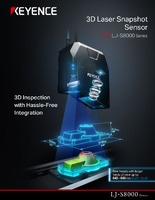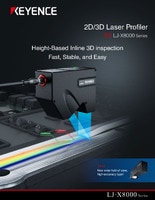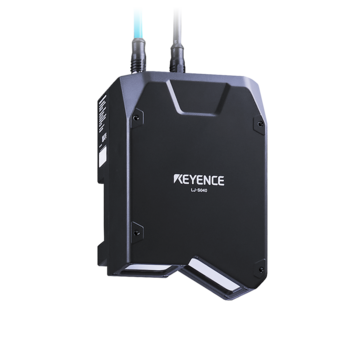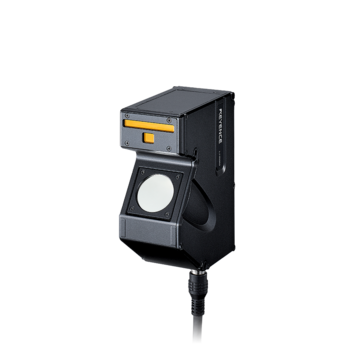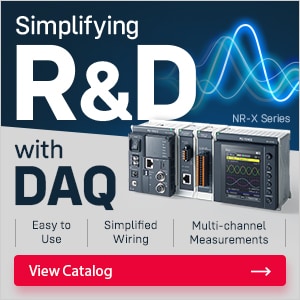Measurement Sensors
Dimension Measurement
Displacement Measurement
Sensors for Defect Detection of Painted Surfaces
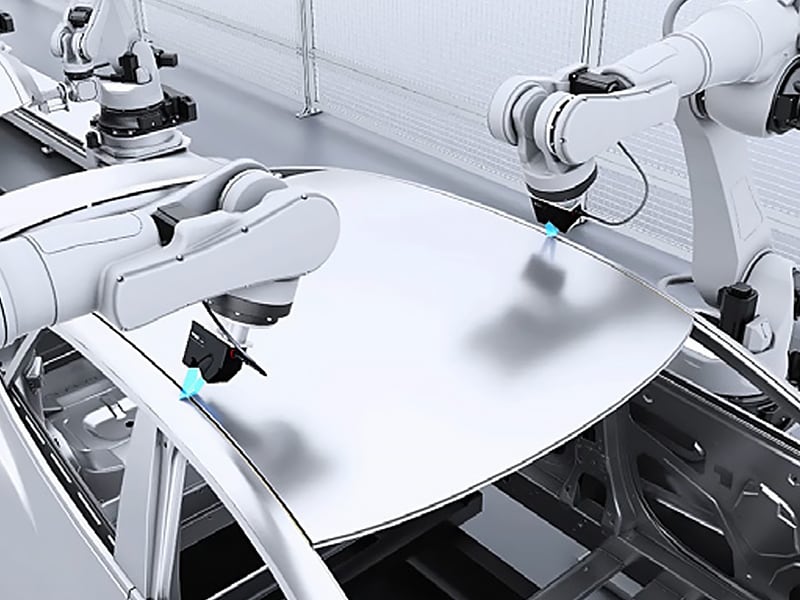
The quality of a painted surface goes beyond aesthetics. In industries like automotive and electric vehicles, even minor surface imperfections, such as pits, scratches, and debris, can compromise a protective coating. If there are no defect detection systems in place, these flaws can expose underlying materials to corrosion.
Importance of Defect Detection on Painted Objects
Today’s automatic painted surface inspection and defect detection systems have redefined quality control. Advanced paint inspection equipment, powered by precision sensors, detect microscopic flaws.
Additionally, laser displacement sensors work as paint thickness sensors when programmed to measure a uniform coat. These sensors not only ensure a quality finish but also reduce material waste from over-application.
How Sensors Detect Surface Imperfections on Painted Layers
Modern defect detection systems use advanced sensors to identify flaws in painted surfaces. The automation of this practice removes the need for manual testing and intervention.
2D and 3D sensors work by capturing high-resolution data from painted surfaces. These systems can detect defects so small that are invisible to the human eye. These sensors are capable of producing a topographical map of the painted surface, allowing manufacturers to comply with strict design and performance standards.
Automated defect detection of painted objects also adapts to reflective and complex surfaces, detecting bubbles and irregularities in different surface geometries that are otherwise missed.
We’re here to provide you with more details.
Reach out today!

Identifying Debris and Pits on Painted Surfaces
Among the most common defects found on painted surfaces are debris and pits. However small, they can significantly impact the final quality of the product. Advanced defect detection systems are designed to pinpoint these flaws with precision.
Debris, like dust or dirt, often adhere to painted layers during the application or drying process. This creates raised areas or “pimples” on the surface. On the other side of the spectrum, pits form as small depressions caused by air bubbles or improper curing.
Sensors can measure the size, shape, and depth of the debris with micron-level accuracy. This precision allows manufacturers to take corrective action before defects impact the final product. By integrating defect detection, production lines can benefit from increased reliability and consistency.
Applications of Defect Detection in Various Industries
Defect detection systems are always needed, especially where surface quality determines product longevity and customer satisfaction.
In the automotive industry, detecting imperfections helps maintain both aesthetics and durability. Automated systems equipped with laser profiling systems and high-resolution cameras identify defects in real time. These sensors help ensure consistent results across production.
The aerospace sector also relies on similar detection technology. These systems have even stricter requirements than automotive. Sensors need to ensure that painted surfaces meet the most stringent safety and performance requirements. Even the most microscopic flaw can compromise the integrity of any given part.
In heavy machinery and industrial manufacturing, consistent paint thickness protects equipment against corrosion, wear, and environmental damage. Accurate paint inspection enables the equipment to maintain long-term durability.
For industries where accuracy and efficiency are critical, KEYENCE provides a full range of solutions, including automatic inspection of painted surfaces, defect identification, and high-precision paint thickness sensors. Contact KEYENCE today to integrate cutting-edge defect detection systems into your processes.
Contact us to learn more about how our advanced technology can help take your business to the next level.
Contact Us
Related Products
Applications
Dimension Measurement
- Thickness and Width Measurement
- Step Height Measurement
- Inner and Outer Diameter Measurement
- Measuring Angles
- Meandering/Edge Measurement
Displacement Measurement
- Positioning and Stroke Length Measurement
- Vibration and Runout Measurement
- Deflection Measurement
- Measuring Eccentricity

